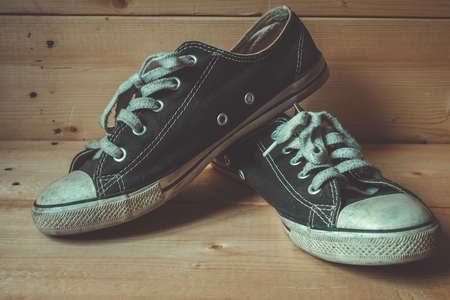Cleaning Your Tent After Use
Keeping your tent clean is the first step in ensuring it lasts for many adventures to come. After each trip, take time to shake out any loose dirt and debris before packing up. Set up your tent at home or in your backyard, then gently brush off any remaining soil or leaves. For stubborn spots or stains, use a soft sponge with mild soap and cold water—never harsh detergents or bleach, as these can damage the fabric and waterproof coatings. Pay special attention to zippers and seams where dirt loves to hide. Hang your tent in a shaded area to air dry completely, avoiding direct sunlight that can degrade materials over time. This simple routine keeps your tent fresh, odor-free, and ready for the next outdoor escape.
Drying: Preventing Mold and Mildew
After every camping trip, make it a priority to dry your tent completely before packing it away. Even if the weather seemed dry, morning dew or body heat can leave hidden moisture on the fabric and seams. Moisture trapped inside your tent is the leading cause of mold and mildew, which can weaken the material, cause unpleasant odors, and shorten your tent’s life.
Why Thorough Drying Matters
Mold and mildew thrive in dark, damp environments—exactly what you create when you store a wet tent. Not only do these fungi damage the tent’s waterproof coating, but they also create stains that are difficult to remove. By taking time to properly dry your tent, you’re protecting both its function and longevity.
Best Practices for Drying Your Tent
| Step | Action | Tips |
|---|---|---|
| Shake Out Debris | Remove dirt and leaves from inside and outside | Do this at camp or before drying at home |
| Hang to Air Dry | Hang your tent over a line or open it fully | Avoid direct sunlight for long periods to prevent UV damage |
| Check Hidden Areas | Open all doors, windows, and pockets | Makes sure corners, seams, and rainfly are fully dry |
| Final Check | Inspect for dampness by touch | If in doubt, let it air out longer indoors or in shade |
Quick Tip for Rainy Days:
If you return home in wet weather, set up your tent indoors or in your garage until it dries completely. Never store a damp tent in its stuff sack—it only takes a day or two for mildew to start growing.
The extra care you put into drying your tent after each use will ensure it’s ready for many more adventures down the road.

3. Inspecting for Damage
Before you store your tent, take a few minutes to carefully inspect it for any signs of wear and tear. Lay your tent out flat in a well-lit area and look closely for rips, small holes, or tears along the fabric, particularly at stress points like seams and corners. Don’t forget to check the mesh panels and rainfly as well. Examine all zippers—slide them up and down to see if they snag or separate, which could leave you exposed during your next trip. Prompt repairs make a big difference: patching holes with a repair kit or fixing sticky zippers right away prevents minor issues from turning into major problems later. A well-maintained tent not only lasts longer but also keeps you comfortable and protected on every adventure.
4. Proper Folding and Packing
Folding and packing your tent correctly is essential for extending its lifespan and maintaining its performance. When you pack up after a camping trip, always make sure your tent is completely dry to prevent mold and mildew growth. Never force your tent into a stuff sack if it feels too tight, as this can put stress on the seams and fabric, causing premature wear.
Best Practices for Folding Your Tent
Instead of always folding along the same lines, try loosely rolling or stuffing the tent differently each time. This helps avoid permanent creases that weaken the material over time. If you must fold, keep seams aligned but not sharply creased, and avoid folding poles inside the tent body.
Recommended Packing Methods
| Packing Method | Pros | Cons |
|---|---|---|
| Loose Rolling | Reduces fabric stress; prevents hard creases | Takes up more space in storage bag |
| Random Stuffing | Avoids repeated folds; quick and easy | Can be harder to fit back in bag if not careful |
| Traditional Folding | Neat and organized; fits well in stuff sack | Creates repeated stress points if done the same way every time |
Packing Tips for Long-Term Use
- Always remove dirt and debris before packing.
- Packing loosely is better than packing tightly.
- Use a ground cloth or footprint to protect the bottom from abrasion during storage.
- If possible, store your tent in a breathable storage bag rather than a compression sack.
By following these simple folding and packing practices, you’ll help your tent stay ready for adventure season after season.
5. Choosing the Right Storage Location
Storing your tent properly is essential for preserving its quality and lifespan. The best place to keep your tent is a cool, dry area that’s shielded from direct sunlight, heat sources, and excess moisture. High temperatures can weaken fabric coatings and adhesives, while humidity encourages mold and mildew growth. Basements, garages, or sheds may seem convenient but often trap moisture or experience temperature swings—choose a spot in your home where the climate remains steady year-round.
Keep Pests at Bay
Rodents and insects are attracted to food residue and natural fibers. Always store your clean, dry tent in a sealed container or sturdy storage bag to block out critters. Avoid storing tents directly on the ground; use shelves or elevated surfaces to further deter pests and prevent accidental water damage.
Air Circulation Matters
Good airflow helps prevent musty odors and fabric breakdown. If possible, loosely fold or roll your tent rather than compressing it tightly in a stuff sack for long-term storage. This keeps stress off seams and coatings while allowing air to circulate around the material.
Easy Access and Routine Checks
Choose a location that’s easy to reach so you can check on your tent every few months. Regular inspections help you catch signs of dampness, pest activity, or fabric wear before they become major issues. With mindful storage, your tent will be ready for adventure whenever you are.
6. Seasonal Checks and Maintenance
Each season brings its own challenges for your tent. Take time at the start and end of camping season to inspect every part of your tent. Unpack it fully, even if you haven’t used it in a while. Look for small tears or holes in the fabric, test the zippers, and check poles for bends or cracks. Clean out any dust or debris that may have settled during storage.
Quick Assessments Before Every Trip
Before you head out, do a quick run-through: Are all stakes accounted for? Is the rainfly intact and waterproof? Make sure cords and guy lines aren’t fraying. If anything needs repair, fix it right away—small problems can become big ones fast when you’re outdoors.
Re-waterproofing and Sealing
Over time, your tent’s waterproof coatings can wear down. Once a year, apply a fresh coat of seam sealer and waterproof spray on the rainfly and floor. This keeps you dry during unexpected showers.
Storing After Each Season
At the end of each season, store your tent loosely in a cool, dry spot. Avoid tight stuff sacks for long-term storage—they compress the fabric and reduce its lifespan. Let your tent breathe so it’s always fresh and ready for adventure.


